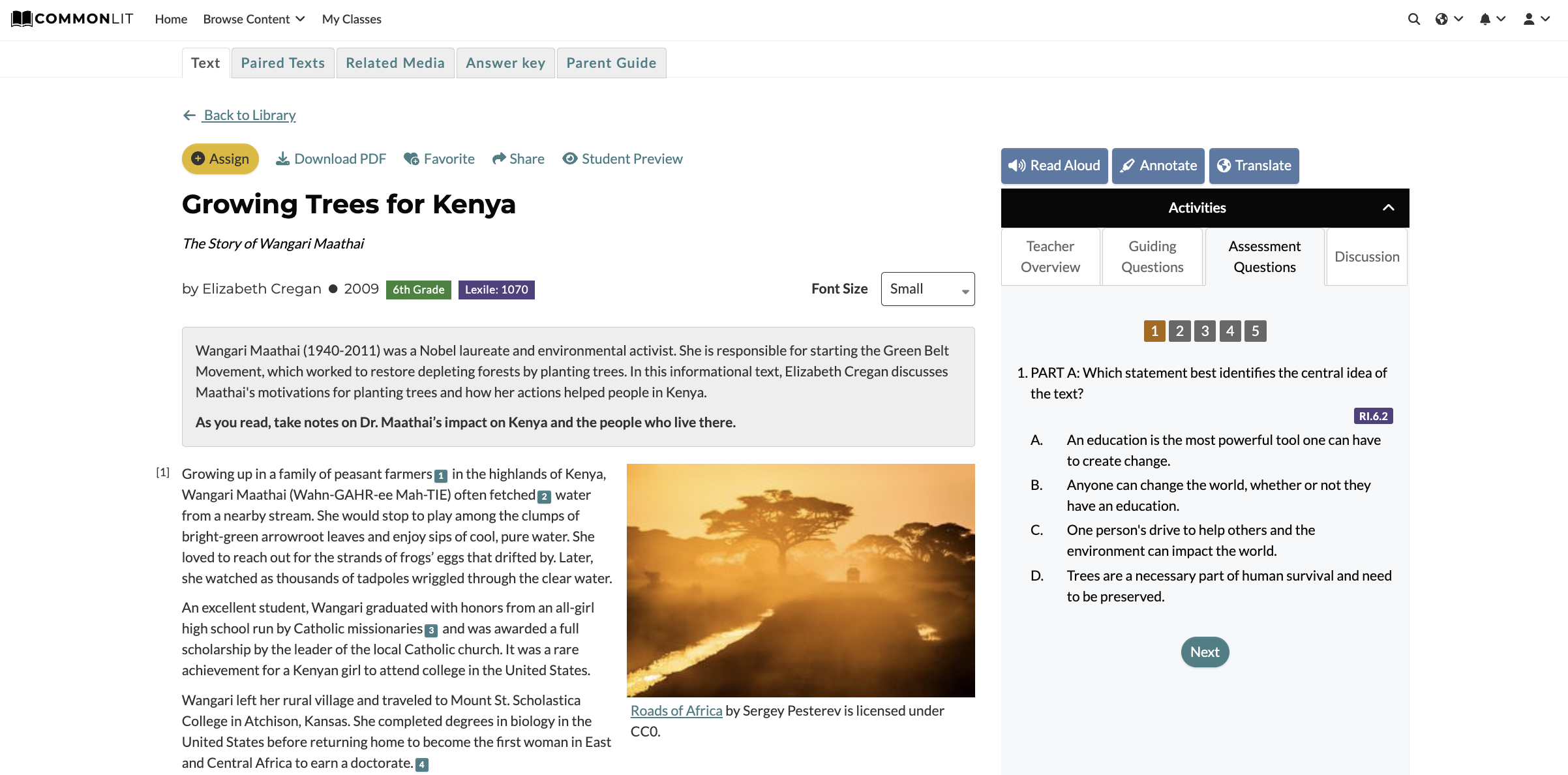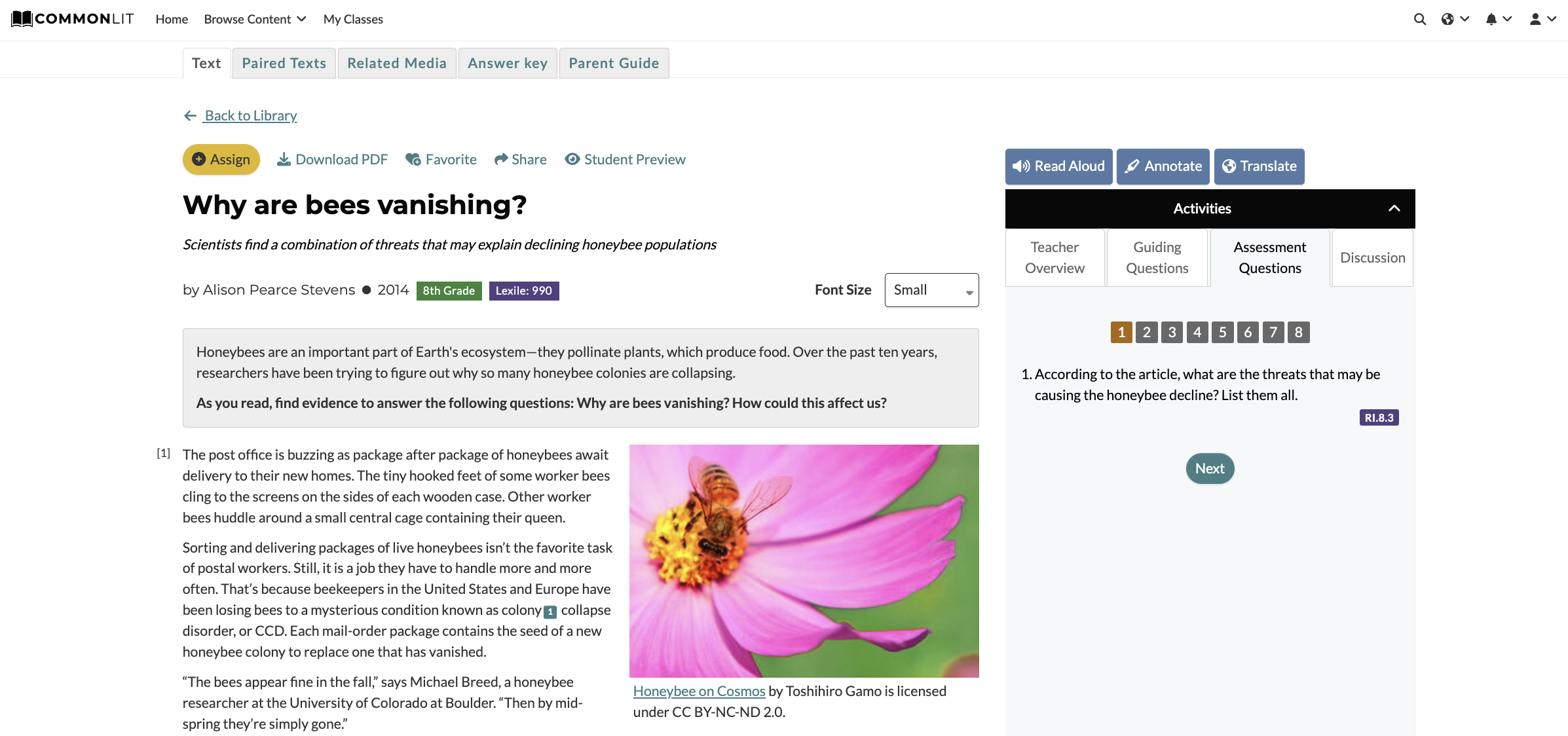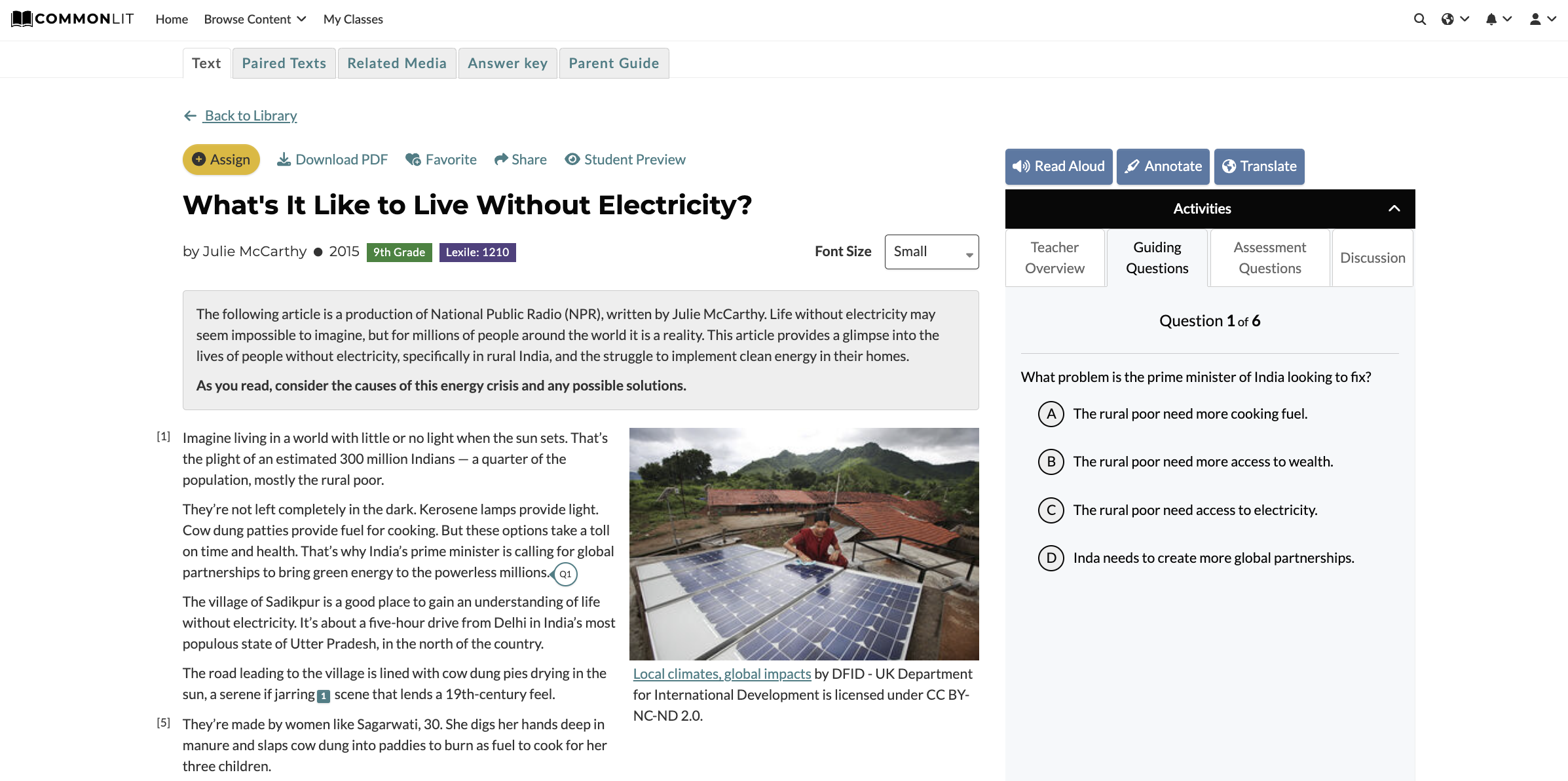Our Earth is beautiful, but it is currently facing many challenges. From pieces of plastic dotting our oceans, to deforestation and disappearing species, the problems the Earth faces can often seem overwhelming to students. It is important to learn about these issues and empower students to make meaningful change in their own communities.
These eight texts from CommonLit that discuss some of the environmental problems we face and what young people are doing about them will inspire your students to take action to protect the environment.
“Tiny Plastic, Big Problem” by Alison Pearce Stevens (6th Grade)
In this eye-opening text, the author explains the problem with plastics. Plastics do not decompose but rather break down into smaller pieces which end up in our oceans and affect marine life. The author explains how reducing the use of plastic can help solve this important issue. After reading, students can discuss how they can reduce their plastic waste at home and in school.
“Growing Trees for Kenya” by Elizabeth Cregan (6th Grade)
In this inspirational text, the author describes the accomplishments of Dr. Maathai, who started the Green Belt Movement in Kenya. Maathai saw how certain crops depleted Kenya’s landscape. She convinced the government to supply her with seedlings to plant throughout the country and revitalize the landscape. This is a great text to jump start a conversation about environmental conservation with students. Ask students what conservation efforts they see in their community and how they could contribute.

“Dirty Air Can Harm Your Brain and Stress Your Body” by Lindsey Konkel (7th Grade)
Students probably recognize air pollution from cars and factories, but they may not know that it can have a negative impact on their brains. In this text, the author explores how being exposed to air pollution can cause people to develop mental and physical health problems that can worsen over time. After reading, have students brainstorm solutions to combat the problem.
“Can DNA Editing Save Endangered Species?” by Kathiann Kowalski (8th Grade)
In this informational text, the author describes how a recent scientific development that involves editing invasive organisms’ DNA may help save endangered, native species. Have students discuss their opinions on the benefits and risks of eliminating invasive species. Ask students if they think scientists have the right to genetically modify organisms.
“Why Are Bees Vanishing?” by Alison Pearce Stevens (8th Grade)
In this text, the author describes how bee colonies are vanishing around the country and dives into multiple theories that explain the phenomenon. Have students follow the annotation task as they read, which asks them to find evidence for why bees are disappearing. Then, ask students to discuss how bees vanishing could affect our daily lives.

“Water Scarcity: A Global Issue” by Shelby Ostergaard (8th Grade)
In areas where water is easily accessible, it is easy to forget that people face water scarcity every day. In this text, the author explains how water can become scarce in different regions and its effects on the people who live there. This text will push students to reflect on the importance of some resources that we take for granted.
“What’s It Like to Live Without Electricity?” by Julie McCarthy (9th Grade)
In this article, the author provides a glimpse into the lives of people who live without electricity around the world. She also describes some of the sustainable ways people are attempting to solve this problem, including distributing solar-charged lanterns. This article will prompt students to think about environmental issues they see in their own communities and encourage them to think about creative solutions.

“Lee Sherman and the Toxic Louisiana Bayou” by Dr. Arlie Hochschild (9th Grade)
In this text, the author presents the story of Lee Sherman, a man who worked at a chemical company in Louisiana. The company exposed both the environment and their employees to dangerous chemicals, and Lee grew ill due to the exposure. After reading, have students discuss how Lee’s story connects to other environmental issues they have learned about.
Next Steps
Looking for more texts about the environment? Browse the CommonLit Library!
If you’re interested in learning all about CommonLit’s free digital literacy program for secondary teachers and students, join one of our upcoming webinars!


